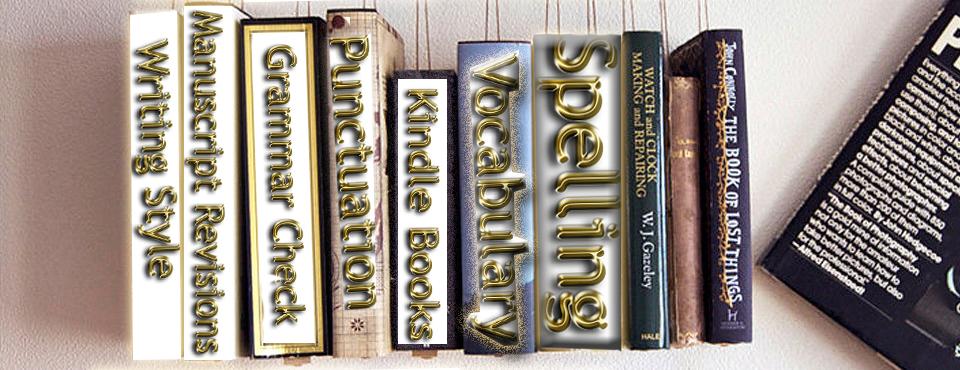By Stu Leventhal
Yes, your characters need to stand out from the crowd if you are going to be known as a great characterization author. But you don’t want to have a book or story full of eccentric individuals unless there’s a good reason that justifies it. An author has to decide where to make a stand, where to draw the line in the sand. You can’t psychoanalyze every character in every scene. It will take you much too long to get anywhere with your plot. Plus you will overwhelm and confuse your readers. After all, a story, short or long, has to have a beginning middle and end. Plus, to be comprehended thoroughly by an author’s audience, every tale must also contain all of the other essential literary story telling elements too. Those other basic elements besides characterization being; setting, plot, theme and point of view, to start with.
Any prolonged narrative of only characterization or even mostly characterization sprinkled with dabs or hints of one or two of the other main elements will feel contrived when read as if you are forcing the information on your readers. Once an author loses his readers trust it is almost impossible to write one’s way back in. Think of yourself as an attorney addressing a jury. Your readers, the jury, will only give your opinion so much weight. They want to hear and see real proof that your hero is a swell, humble, shy, guy and your villain is a despicable, louse who will stop at nothing to get what he wants!! Simply stating your heroine Matilda is stunningly beautiful, with a fair complexion and a heart of gold must be backed up by other people’s reactions to first laying eyes on the lass as well as her actions throughout the tale being selfless and charitable!
Therefore, spend as little time on outright formal, word for word, descriptive characterization dictation like; Juan was brutally handsome, intelligent and witty. Because it is not needed and a complete waste of your audiences time to have to read extra words when throughout the story, every time strange women first meet Juan they are always swooning, flirting and throwing themselves at Juan’s feet. Isn't it implied how handsome Juan must be? Give your reader a little credit to be able to figure out Juan is a heart throb! Juan’s participation in dialog is where you would establish how witty and intelligent Juan truly is as well as how he reacts in scenes, and via the decisions he makes throughout the tale will help define his intelligence too.
Needless to say, you should be developing the other elements of storytelling at the same time as you divulge your characters’ personalities. Themes should be sprouting up as your characters make life choices. Settings should be dramatized as your characters face off against obstacles such as the fury of Mother Nature or the backdrop of a city in political turmoil, war or a nation in the midst of a revolution! Passages read more natural and are easier to accomplish when you leverage the power of each element to help strengthen its fellow elements, including and especially when building and strengthening characterization. And, an author can say so much more, so much quicker!
Remember that old wise tale? Action speaks louder than words. Let the action in your scenes display your characters traits, fears and motives. Even a character’s spoken words don’t necessarily expose their motives. People in real life are always saying one thing and doing or meaning something else. Yet for your reader to follow your train of thought it is imperative that you expose the inner workings of your main characters’ minds.
One dimensional characters are boring and your readers expect and deserve more! Our own lives are quite sophisticated and your fictional characters must lead complicated lives too! Most of us are made up of the same list of traits. What gives us each our individuality is how prominent each of our traits are. Our personalities are defined by which traits are our most dominate. But, a thrill seeking, adventurous braggart still shares many of the same traits, desires and dreams that a shy, analytical, studious, social introvert has too, just in different doses.
Oh yes, we sure look to our favorite authors to take us places beyond reality. Sure, we want characters who are bigger than life! Yet, your reader expects to remain anchored to the floor throughout even the wildest ride. Go too far out there and you lose us. Believable characters are consistent in their actions yet still have room to mature, learn and occasionally surprise us impulsively! For an example, let’s look at an extreme case of character building. Let’s consider how much thought a science fiction writer has to put into creating a unique, original, non-cliché, creature from another galaxy.
The creature must have the physical attributes that allows it to live in unusual environments it in habits; extreme heat or cold, perhaps a lack of water or earth like air, maybe a natural coat of armor if it needs to protect itself from other violent creatures on its planet of birth. If the creature is supposed to have flown to earth in a spaceship, it must have fingers and hands or some other agile digits that can realistically build and operate a complicated space ship’s controls and it must have intelligence to navigate vast space travel.
Long gone are the days when your reader will accept a foaming at the mouth, part lizard and part insect or a sharp, toothed and fanged, flying aberration with wiggling long antennae sprouting from the top of its head, who attempts to mindlessly eat everything in its path.
Many of the creature’s traits will be based on the creature's birth planet’s environment and what it needed to survive there. Other traits will be based on what the author plans to go with the stories plot. IF the story is to be about a hostile invasion of earth then the creature should come prepared to do battle and conquer us. It’s personality would be cold-hearted and all business like. But what if this sci-fi author was presenting a theme based on the idea that man may not be the smartest thing out there. Then perhaps the creature would take on the personality traits that the author imagines a being of higher intelligence than man would have like, compassion for all living things even one’s like man who are trying to harm it. Or you might give your creature, mind-reading capabilities or the ability to move objects with just its mind. Or perhaps unusually quick wound healing abilities.
What is obvious to view in sci-fi because everything is made up out of the author’s imagination still pertains to all characterization in every fiction genre. You give your characters the traits they need to exist in their environments. You give them the traits you need them to have that allows you to advance the tale forward and meet the needs of your plot as well as to engage and develope the intended themes of your story. And, the setting, plot and the themes all help you define for your reader who each of your characters are, as well as becoming the catalysts that help define who your characters become as the story progresses towards its ultimate conclusion. Because, isn't the fiction tale itself, for the most part, a documentation of your characters' journey?













 RSS Feed
RSS Feed